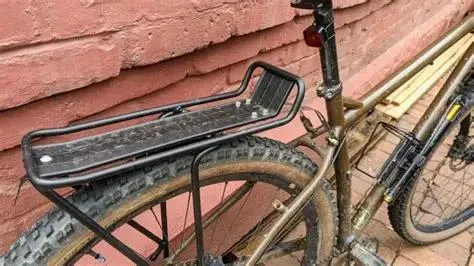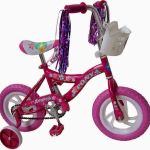
- 1-why-the-right-rear-bike-rack-matters-for-touring
- 2-key-factors-to-consider-when-choosing-a-bike-rack
- 3-different-types-of-rear-bike-racks-for-touring
- 4-real-stories-from-touring-cyclists
- 5-find-the-perfect-rack-with-cycling-guider
1. Why the Right Rear Bike Rack Matters for Touring
For long-distance cyclists, selecting the best rear bike racks for touring can be the difference between a smooth journey and a frustrating one. Touring racks are the backbone of your gear system—they carry your load, keep it balanced, and help maintain comfort and efficiency over hundreds or even thousands of miles. Without a reliable rear rack, your panniers might sway, your frame may strain, and your ride could become unnecessarily difficult.
2. Key Factors to Consider When Choosing a Bike Rack
Choosing the best touring bike rack is not just about price or appearance—functionality and fit are everything. Here are a few essentials to evaluate:
Material: Aluminum is lightweight and rust-resistant, while steel is heavier but more durable and easier to repair in remote areas.
Weight capacity: Look for racks that support at least 50 lbs if you’re fully loaded. Some heavy-duty models go up to 80 lbs.
Mounting style: Eyelet mounts are more stable, but there are racks designed for bikes without traditional mounting points.
Compatibility: Your rack should fit your frame size, wheel size, and brake system (disc or rim).
3. Different Types of Rear Bike Racks for Touring
Not all racks are built the same. Depending on your style of touring, you might need a different type:
Full-frame racks: These are the most common racks for heavy touring. They mount to seat stays and dropouts and offer two side rails to secure panniers and a top platform for extra gear.
Seatpost-mounted racks: Ideal for minimalist or credit-card touring. These are not for carrying more than 20 lbs but are great for short trips.
Rack and fender combos: Some racks include fender protection—great for keeping mud off your gear while touring through all weather.
Brands like Tubus, Topeak, and Old Man Mountain are often recommended by veteran tourers. Their racks have survived everything from European trails to Andes crossings.
4. Real Stories from Touring Cyclists
Ben, a touring cyclist from Colorado, once shared how his Tubus Logo Evo held up through 1,200 miles in Chilean Patagonia. “The rack was the only part of my bike that didn’t complain,” he said. Another rider, Mia, took her Topeak Super Tourist DX through Southeast Asia and praised its easy side rail access for quick pannier adjustments in the middle of a Thai monsoon.
These aren’t just accessories—they’re your pack mules, your support system, and your peace of mind on two wheels.
5. Find the Perfect Rack with Cycling Guider
Ready to find the best rear bike rack for your next tour? At Cycling Guider, we test and recommend racks based on real-world experience and mechanical integrity. Whether you’re preparing for a weekend adventure or a cross-continental journey, we help you pick the right gear that fits your bike, budget, and bold plans.







 Billet BMX5.0 (2 reviews)
Billet BMX5.0 (2 reviews) Far East Children Bicycle Factory1.0 (1 reviews)
Far East Children Bicycle Factory1.0 (1 reviews) Archer Motorsports, Inc.4.0 (8 reviews)
Archer Motorsports, Inc.4.0 (8 reviews) YEP Bike Works4.0 (55 reviews)
YEP Bike Works4.0 (55 reviews) Gorham Bike & Ski4.0 (498 reviews)
Gorham Bike & Ski4.0 (498 reviews) Alchemy Bikes4.0 (37 reviews)
Alchemy Bikes4.0 (37 reviews) How to Teach Kids to Ride a Bike: A Step-by-Step Guide for Parents
How to Teach Kids to Ride a Bike: A Step-by-Step Guide for Parents Tips for Riding on Busy City Streets: Smart Strategies for Urban Cyclists
Tips for Riding on Busy City Streets: Smart Strategies for Urban Cyclists Best US National Parks for Mountain Biking: Ride Epic Trails Across America
Best US National Parks for Mountain Biking: Ride Epic Trails Across America Best Aero Helmets for Time Trials and Racing
Best Aero Helmets for Time Trials and Racing How to Clean and Lubricate Your Bike Chain Like a Pro
How to Clean and Lubricate Your Bike Chain Like a Pro 10 Must-Have Items for Long-Distance Cycling Trips
10 Must-Have Items for Long-Distance Cycling Trips